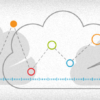Make The Connection – How Your HFC Tools Can Work Harder For You

Make The Connection – How Your HFC Tools Can Work Harder For You
The people who monitor and maintain HFC networks have an impressive if not overwhelming number of tools available to them today. Some of these tools like upstream spectrum analyzers and plant leakage systems have been around since the early days of cable, others like PNM tools are relatively new. Used independently each has proven their value over time, but with the advent of integrated systems that allow interoperability operators are realizing a total value much greater than the sum of their parts.
Powerful Individual Tools
- Plant Leakage Solutions – Most efficient way to find shielding weaknesses that allow cable signals to escape the network (potentially interfering with licensed LTE spectrum) and off-air signals to enter (Ingress!)
- PNM Upstream Pre-Equalization tools – Powerful tools for remotely detecting and localizing impedance mismatches in the plant.
- PMN Downstream Full-Band Capture tools – Automated detection of common downstream spectral footprints like standing waves, suckouts, FM or LTE ingress, plus many others.
- CCAP/CPE-based QoE Monitoring – Identify and trend customers whose service is being impacted or is near the impact threshold and correlate detected plant issues with impacted subscribers to focus efforts in issues which matter most for reducing churn
- Fiber Monitoring – By monitoring fiber link health from the core network all of the way out to the MUX in the access network and displaying results in the same system with all of the above data, triage between fiber and HFC issues can be greatly simplified. Enabling instant, single-click access to live OTDR scans on any supporting fiber links allows technicians to troubleshoot outages much faster without involving additional workgroups.
- Mobile Connectivity – While not directly a field maintenance tool, smartphones provide internet and Bluetooth connectivity, geolocation, and multimedia capture capabilities for nearly all technicians in the field.
- Test Data Management Systems – Every time a test is ran on a field service meter, a geolocated record can be sync’d to a centralized server. This historical data is invaluable to understand current issues if made easily available.
How 1+1 Can Equal 3
Used independently these tools are all powerful weapons in a plant maintenance teams arsenal, but when integrated and used together they can identify and solve problems much faster.
Plant Leakage + PNM Tools: Many of the problems that are detected by PNM tools also allow signal egress that leakage systems detect and log. Things like loose connections, damaged cables, etc. While pre-eq tools provide a distance to fault from last isolation point, correlating between plant map and PNM map can be confusing even when overlaid. The same is true for FM and LTE ingress in the downstream – determining where to roll a truck is infinitely better than previous methods but can still be improved upon. In either case if plant leakage data is overlaid on PNM data and a significant leak is found near the PNM-identified location than a truck can be rolled to a specific address with even higher confidence. Once in the field a leakage meter and directional antenna can point you directly to the shielding defect. In many cases this will also be your PNM-identified fault, simply refresh your PNM screen after fixing the leak to confirm. In the cases where it is not you still have hardened the plant by fixing the leak.
+ QoE: PNM and Leakage tools both identify plant weaknesses but neither can tie them directly back to subscriber impact. By integrating customer QoE system, PNM, and leakage together it is simple to see which issues are impacting customer experience, and then find and fix faster through methods discussed above.
+ Mobile Connectivity: By connecting service meters and leakage meters to a mobile app, test records can by geolocated and rapidly sync’d back to a central server. Pictures and videos can be captured and tied to the test record to document actions taken.
+ Test Data Management Systems: Knowing where work has been performed in the field can be helpful to triage issues and spot repeat problems. Overlaying locations of past repair actions on a map with PNM, QoE, and leakage data provides complete visibility into the current situation including recent repairs to enable the fastest and most accurate triage before dispatching
The Future
Integration of the above systems and capabilities is yielding significant dividends for cable operators today in the form of churn and OPEX reduction, and it is likely the best is yet to come. Advances in artificial intelligence (AI) and machine learning (ML) will enable further automation including detection of emerging issues long before services are impacted and instant pinpointing of source prior to dispatch.
Learn more about VIAVI Cable Signal Leakage
Be sure to follow VIAVI on LinkedIn to see the rest of this blog series



